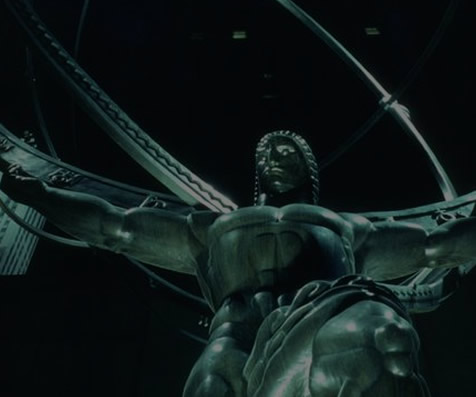Buffett Brand Strategy - Puts Stock in Household Names
Buffett Brand Strategy - Puts Stock in Household Names
Even Warren Buffett Puts Stock in Household Names
From his growing list of acquisitions, Warren E. Buffett seems to be investing like the world's richest 10-year-old boy, if that boy lived in 1955
He is Coca-Cola's largest shareholder. He owns Dairy Queen. Last year, Buffett got a train set, buying into Burlington Northern Santa Fe Railway. And in late April, he bought a piece of the world's largest candy store, sinking $6.5 billion into the Mars-Wrigley chocolate-and-bubble gum merger.
What's next for the
It is true that the 77-year-old Buffett frequently touts his childlike-love of cheeseburgers and Cokes. But his investment strategy turns out to be more sophisticated than that of a schoolboy with change in his pocket, drooling over a candy counter.
In the eyes of many, the Oracle of Omaha -- whose Berkshire Hathaway holding company owns or has major stakes in many iconic brands, including Fruit of the Loom, Kraft Foods and Johnson & Johnson -- looks like a brand investor.
Brand investors buy companies with well-known or well-regarded names -- Apple, Tiffany, Disney and McDonald's, to name a few. The belief is that even though a brand company may produce many unlike products, their qualities -- supported by strong management and a broad marketing and distribution system -- will translate into consistent, above-average returns over a long period.
"Really, nothing can go wrong with the Wrigley and Mars brands," Buffett said on CNBC after announcing that he would finance part of McLean-based Mars's buyout of Wrigley. "They have faced the test of time over decades and decades, and people use more and more of their products every day."
Brand name companies, said professional money managers who consider themselves brand investors, can often charge more for their products than their less-established competitors and weather tough times more smoothly because of their loyal customer bases. They also have the ability to leverage their name recognition to increase business -- whether it's expanding operations by attracting more Marriott hotel franchisees, launching a new flavor of Crest toothpaste or extending the Clorox brand from bleach to moist towelettes. In addition, brand companies tend to have dominance in their fields, making it difficult for new entrants to chip away at market share.
Such qualities, analysts said, are hard to measure but are certainly a force driving profits at companies whose products are consumed by millions of Americans every day.
"Brands themselves are what one might call soft assets -- they don't actually show up in the balance sheet of a company's financial statements," said Robert Millen, chairman and portfolio manager of Jensen Investment Management, which has shares in Procter & Gamble, Coca-Cola and Johnson & Johnson. "But the value of that brand is clearly in the business -- and it takes years and years to build. Once you've built that strength and you continue to feed it and support it over time, then you get . . . pricing power that allows the business to maintain margins throughout varying economic periods. Secondly, you get repeat business. And those two things lead to consistent earnings."
Branded products companies have a higher propensity to pass along price increases when they have increasing costs themselves, said Larry Coats of the Oak Value Fund. This can prove critical in a time of rising food and energy prices.
"The consumer is buying more than just the raw material," said Coats, whose top holdings include 3M, American Express, Oracle, and, perhaps unsurprisingly, Berkshire Hathaway. "They're buying something else, whether it's a trusted relationship, or confidence in the product, an acknowledgement of a higher quality."
To that end, one brand company that Coats, a value investor, has been buying in recent months is Tiffany, whose shares had been beaten down on concern that consumers squeezed by the economic downturn would curtail spending on luxury goods. In Tiffany, Coats has found a company that consistently produces gross margins of 55 to 57 percent, above the 50 percent of typical jewelry retailers.
"Jewelry is a business where the consumer doesn't really know the cost of goods sold are," he said. "They know that they want to buy a high-quality product from a retailer that they can have confidence in. In the consumer's mind, it's always delivered in the blue box. And the blue box is the symbol of that trusted relationship."
One of the key qualities Gary Bradshaw of Hodges Capital Management looks for in brand companies is the ability to expand products overseas. The thinking is that though mature brands may have little room to grow domestically, especially during an economic slowdown, they could use their overseas plants and vast marketing power to tailor their products in a way that would help them gain market share in emerging economies.
"The world is industrializing right now," said Bradshaw, who owns shares of Starbucks, McDonald's and Wal-Mart. "There are 2 billion people who are going to become middle-class citizens around the world. I believe those folks will live like we do in
While he is also betting on Coca-Cola, which derives more than 70 percent of its revenue from overseas, Bradshaw said he passed on Dr Pepper Snapple Group when it spun off from Cadbury to debut on the New York Stock Exchange last month, in part because 90 percent of its business is in the
Brand investing, perhaps more than any other investing style, is easy to understand and can be followed by patient individual investors who are in it for the long haul and are willing to their homework. But it's not without pitfalls.
Coats quickly realized his mistake when he bought a small stake of Eastman Kodak in 2000, back when it was the leader in the film and developing business. He and his team thought the brand was strong enough to extend its dominant position into the digital age. But ultimately, they concluded that the challenges posed from the proliferation of digital cameras, home printers and electronic imaging was too daunting.
His fund, which had bought the Kodak shares for an average of about $50, sold them off three months later at $39. On Friday, the stock closed at $15.32.
A product with top market share, however, can suddenly be challenged as a result of competitors' mergers and acquisitions.
In the mid-1990s, Matt Kaufler, a portfolio manager of the Touchstone Value Opportunities Fund, took a position in Pet, a food company with several key brands including the Old El Paso line of Mexican products. But then, competitor Pace Foods was acquired by Campbell Soup. And Pepsi began rolling out salsa sauces under the Frito Lay and Doritos labels.
"Picture a vise, and picture Old El Paso in the middle of the vise and on either side is Pepsi and
It was an unsustainable situation that led to the buyout of Pet by a larger British company, which in turn ended up in the hands of General Mills.
Even Buffett has had his share of stumbles despite his long-term record. A 2007 study by researchers at Texas A&M and
But in 1989, Berkshire Hathaway invested $358 million in US Air for 9.25 percent of the airline's preferred stock. In his 1996 letter to shareholders, Buffett wrote that he was "beguiled by the company's long history of profitable operations, and by the protection that ownership of a senior security seemingly offered me."
But, Buffett said, he overlooked a crucial fact: The airline industry was rapidly deregulating. This created cutthroat competition that ate into US Air's earnings even as it had to maintain a cost structure held over from a time when federal regulation protected the carrier's profit. Buffett managed to unload his US Air shares at a gain in 1998, avoiding two bankruptcies by the airline in following years, but he characterized his analysis of the airline as "superficial and wrong."
Buffett also bought into retailer Pier 1 in 2004, just after its stock peaked at more than $25 per share. He sold his stake in 2007, when the stock was trading in the single digits.
As a rule, money managers say, individuals would do well to stick with brand companies that are diversified around the world, have a long record of consistent earnings and sales growth, and a history of supporting their brands. Investors should also try to stick with companies whose brands are No. 1 or 2 in most of their markets, Millen said.
The trick for investors is to buy the companies when they are out of favor because they often trade at a premium, Kaufler said. "Strong brands are rare. And it's even rarer when you can pick them up at an inexpensive price," he said.
Patience, analysts said, is important.
"Warren Buffett would say that when he goes and buys a business, he buys it with the idea that he's going to own it forever," Kaufler said.
Boutique executive search services with best in class global network, contacts and market mastery.
Deeply connected and engaged personal service approach, long-term investment in client community and 25 year history of strong relations with both Multi-National leaders and Private Equity partners.






